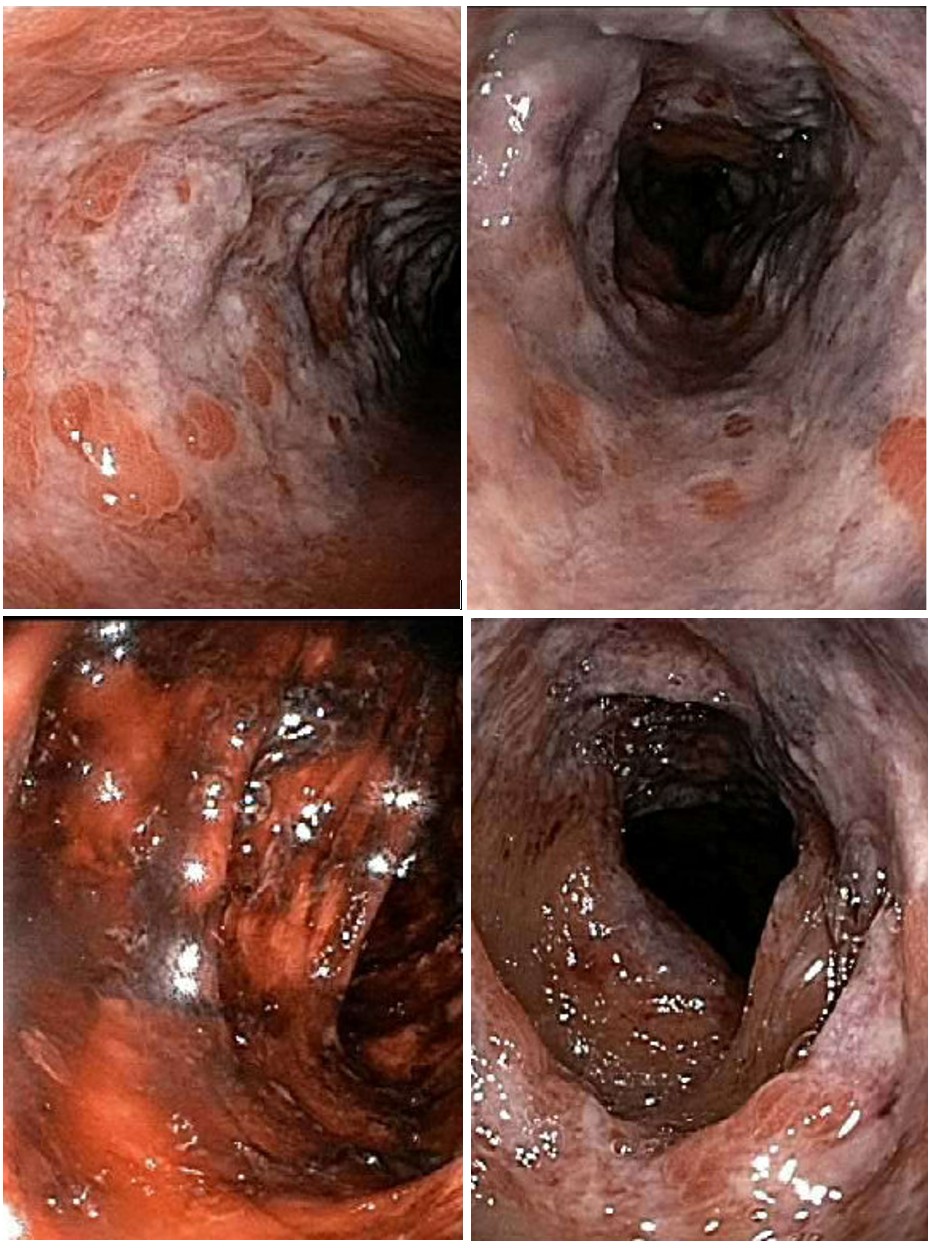Sunday Poster Session
Category: Colon
P0367 - A Rare Case of Gastrointestinal Tuberculosis
Sunday, October 26, 2025
3:30 PM - 7:00 PM PDT
Location: Exhibit Hall
- BP
Bishal Paudel, MD
University of Florida
Gainesville, FL
Presenting Author(s)
Bishal Paudel, MD1, Raymond Richhart, MD1, Antonios Sapounas, MD2
1University of Florida, Gainesville, FL; 2Malcom Randall Veterans Affairs Medical Center, Gainesville, FL
Introduction: Gastrointestinal Tuberculosis (TB) is an extrapulmonary manifestation of tuberculosis caused by infection of the gastrointestinal tract by Mycobacterium tuberculosis. It can occur either in the setting of active pulmonary disease or as a primary infection without any pulmonary involvement. Although it most commonly affects the ileocecal region, it can involve any part of the gastrointestinal tract including the small intestine, colon, or stomach.
Case Description/
Methods: A 51-year-old veteran male with past medical history of type II diabetes, hypertension, metabolic dysfunction-associated steatotic liver disease, gout, leukocytoclastic vasculitis and latent TB (on isoniazid and rifapentine) presented to the emergency department with generalized abdominal pain and hematochezia. Vital signs were stable on admission. Initial labs were significant for WBC 15.51 K/uL and erythrocyte sedimentation rate 31 mm/hr. CT Abdomen and Pelvis with IV contrast showed mildly thickened splenic flexure and left colon with surrounding soft tissue stranding /small fluid collections.
The patient underwent a flexible sigmoidoscopy that revealed a patchy area of moderate to severe erythematous, friable, inflamed and ulcerated mucosa in the distal transverse colon, splenic flexure, and descending colon. Random biopsies were taken for further evaluation. Pathology resulted as colonic mucosa with changes consistent with colitis. The differentials were ischemic colitis, infection, and drug reaction. Acid-fast bacilli (AFB) stain showed rare positive AFB. Grocott-Gomori's methenamine silver (GMS) stain was negative for fungus. His case was reported to the Department of Health, and the patient was started on active TB treatment with rifabutin, isoniazid, pyridoxine, ethambutol, and levofloxacin.
Discussion: Gastrointestinal TB is a rare presentation of TB, particularly in the United States. It is an important differential diagnosis in high-risk patients who present with non-specific gastrointestinal symptoms. Our patient was a veteran who had travelled to areas with high incidence of TB. The management of Gastrointestinal TB is similar to pulmonary TB. Early treatment is essential in avoiding complications such as strictures, perforation, or fistula formation.

Figure: Figure A: Colon with erythematous, friable and ulcerated mucosa
Disclosures:
Bishal Paudel indicated no relevant financial relationships.
Raymond Richhart indicated no relevant financial relationships.
Antonios Sapounas indicated no relevant financial relationships.
Bishal Paudel, MD1, Raymond Richhart, MD1, Antonios Sapounas, MD2. P0367 - A Rare Case of Gastrointestinal Tuberculosis, ACG 2025 Annual Scientific Meeting Abstracts. Phoenix, AZ: American College of Gastroenterology.
1University of Florida, Gainesville, FL; 2Malcom Randall Veterans Affairs Medical Center, Gainesville, FL
Introduction: Gastrointestinal Tuberculosis (TB) is an extrapulmonary manifestation of tuberculosis caused by infection of the gastrointestinal tract by Mycobacterium tuberculosis. It can occur either in the setting of active pulmonary disease or as a primary infection without any pulmonary involvement. Although it most commonly affects the ileocecal region, it can involve any part of the gastrointestinal tract including the small intestine, colon, or stomach.
Case Description/
Methods: A 51-year-old veteran male with past medical history of type II diabetes, hypertension, metabolic dysfunction-associated steatotic liver disease, gout, leukocytoclastic vasculitis and latent TB (on isoniazid and rifapentine) presented to the emergency department with generalized abdominal pain and hematochezia. Vital signs were stable on admission. Initial labs were significant for WBC 15.51 K/uL and erythrocyte sedimentation rate 31 mm/hr. CT Abdomen and Pelvis with IV contrast showed mildly thickened splenic flexure and left colon with surrounding soft tissue stranding /small fluid collections.
The patient underwent a flexible sigmoidoscopy that revealed a patchy area of moderate to severe erythematous, friable, inflamed and ulcerated mucosa in the distal transverse colon, splenic flexure, and descending colon. Random biopsies were taken for further evaluation. Pathology resulted as colonic mucosa with changes consistent with colitis. The differentials were ischemic colitis, infection, and drug reaction. Acid-fast bacilli (AFB) stain showed rare positive AFB. Grocott-Gomori's methenamine silver (GMS) stain was negative for fungus. His case was reported to the Department of Health, and the patient was started on active TB treatment with rifabutin, isoniazid, pyridoxine, ethambutol, and levofloxacin.
Discussion: Gastrointestinal TB is a rare presentation of TB, particularly in the United States. It is an important differential diagnosis in high-risk patients who present with non-specific gastrointestinal symptoms. Our patient was a veteran who had travelled to areas with high incidence of TB. The management of Gastrointestinal TB is similar to pulmonary TB. Early treatment is essential in avoiding complications such as strictures, perforation, or fistula formation.

Figure: Figure A: Colon with erythematous, friable and ulcerated mucosa
Disclosures:
Bishal Paudel indicated no relevant financial relationships.
Raymond Richhart indicated no relevant financial relationships.
Antonios Sapounas indicated no relevant financial relationships.
Bishal Paudel, MD1, Raymond Richhart, MD1, Antonios Sapounas, MD2. P0367 - A Rare Case of Gastrointestinal Tuberculosis, ACG 2025 Annual Scientific Meeting Abstracts. Phoenix, AZ: American College of Gastroenterology.
